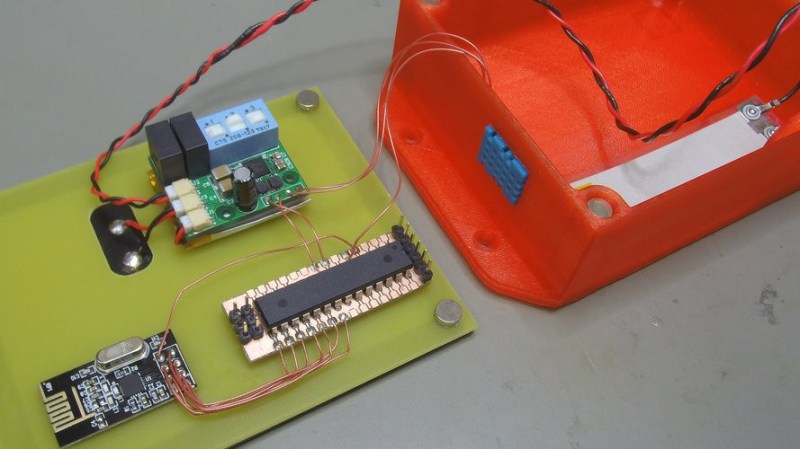[Mile]’s PTPM Energy Scavenger takes the scavenging idea seriously and is designed to gather not only solar power but also energy from temperature differentials, vibrations, and magnetic induction. The idea is to make wireless sensor nodes that can be self-powered and require minimal maintenance. There’s more to the idea than simply doing away with batteries; if the devices are rugged and don’t need maintenance, they can be installed in locations that would otherwise be impractical or awkward. [Mile] says that goal is to reduce the most costly part of any supply chain: human labor.
The prototype is working well with solar energy and supercapacitors for energy storage, but [Mile] sees potential in harvesting other sources, such as piezoelectric energy by mounting the units to active machinery. With a selectable output voltage, optional battery for longer-term storage, and a reference design complete with enclosure, the PPTM Energy Scavenger aims to provide a robust power solution for wireless sensor platforms.



















Another not insignificant source of free indoors power, not mentioned here or in the project page, is induction from power lines. Just the hum picked up with a loop antenna anywhere in a room with wiring in the walls can harvest enough to dimly light up a handful of 2mm LEDs, so I presume this is in the mA range and that is 24/7. Also a potential of hundreds of volts of AC per meter elevation is available under power lines and at electrified train stations with enough current to charge a phone. Similarly, if your application is near a radiotower, FM or cell, it should be possible to rob the media conglomerates of a few cents of power.
Do you know that any “hum” picked up from your own wires will add to your bill?
Power is not free and does not emerge from thin air.
Your loop antenna will act as a loose coupled transformer.
The power comes from the grid, through your meter.
And under a powerline its theft.
In warm water heaters there is a sacrificial anode.
They are made of zinc.
Buy one and stick it into the ground with a copper rod.
Should give you power for about 5 years.
https://en.wikipedia.org/wiki/Earth_battery
So, it’s basically a breakout for the LTC3331? Don’t get me wrong, it’s nice to have a reference design like this, but an entire post dedicated to no details seems shoddy at best.
What the PTPM mean?
Photovoltaic, Thermoelectric, Piezoelectric, Magnetic according to the hackaday.io page
Oops! Good question. According to the project’s page, the “PTPM” name is taken from the potential power sources: Photovoltaic, Thermoelectric, Piezoelectric, and Magnetic induction.
If all you need is to measure the humidity and temperature and send it with a NRF24….well then you can buy batteries that will last 15 years* for the money of that converter. And please tell me how certain it is that the sensor will be relevant in 15 years?
*seems you can buy about 4 AA lithium batteries with a shelf life of 15 years for the same price as the LT3331.
I am not saying energy harvesting is irrelevant, just that it kind of became a buzz thing people seem to throw at everything. In many applications I have seen, the harvesting element is large enough that there is no problem to replace it with batteries for a lower cost, which should provide enough energy from the start for the whole lifetime of the product.
Indeed, and sometimes add also the price for a supercapacitor ans a solar cell, plus the uncertainty for the failure rate of a supercapacitors, which might not work at all after a decade or so of continuous usage.
We have harvested energy from a couple sources using piezoelectric generators that harvest energy from vibrations on the structure. We had implemented some remote monitoring systems that needed very little energy to function.
One system used a piezo bimorph (Steminc SMBA4510T05M) that was installed against the wall of the structure. The vibration was not too strong so we needed a device that could vibrate very easily.
The other application had a more robust vibration and we could use one that profited for more mechanical force. We used a Steminc bimorph SMGE79W18T15V40 but you have to be careful with this one because if the deflection is more than 1mm the piezo portion of the bimorph can crack. We added a travel limitation to the assembly so the bimorph could not be bent more than 1mm on its center. These monitoring systems have been working for 3 and 5 years, respectively, and not trouble so far on getting power. We bought these products from http://www.steminc.com